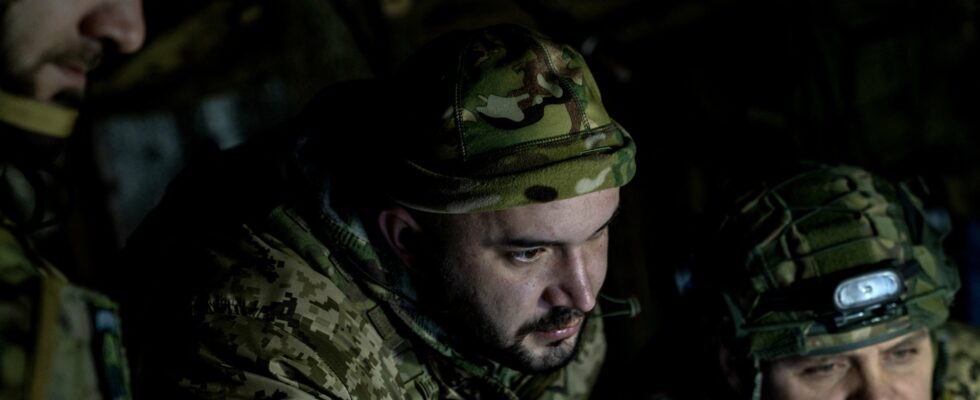As the war in Ukraine enters its fourth year at the end of February, how has the Russian invasion progressed in recent weeks? A report published on January 20 by the American think tank Institute for the Study of War (ISW) indicates that Vladimir Putin’s troops, despite heavy losses, continue their breakthrough into the northeast and south of Ukraine. For their part, Ukrainian forces occupy a small part of the Russian region of Kursk. Both sides are working to cement their positions amid the return to power of US President Donald Trump, who has announced he will seek a quick deal to end the war.
Russian advances in the Northeast
Russian forces have in recent weeks intensified their operations in several regions of northeastern Ukraine, particularly in the Kharkiv, Luhansk and Donetsk oblasts, and in areas bordering Russia. In the Kharkiv region, Russian forces seek to push Ukrainian troops away from the border with Russia’s Belgorod Oblast. They also tried to get close enough to place the important city of Kharkiv within artillery range.
On Thursday January 23, the Ukrainian authorities ordered the forced evacuation of families with children from 16 localities in this area, due to the intensification of Russian strikes. “In total, 267 children and their families must be evacuated from 16 localities” close to the front line, Oleg Synegoubov, governor of this region bordering Russia, explained on Telegram. On Thursday, a 54-year-old woman was also killed in the area by an explosive drone, according to the governor.
Securing the border
Across the border, Moscow is continuing defensive operations in the Kursk oblast, where Ukraine has been leading an offensive since this summer. Despite intense fighting in this area, no significant progress has been made. Russia is also seeking to capture the rest of the Luhansk oblast. The clashes are mainly concentrated in the directions of Kupyansk, Borova and Lyman, where Russian troops continue their offensives, but there too, without major progress for the moment.
In Donetsk, a region claimed by Russia’s proxies in Donbass, the Russian Ministry of Defense announced Thursday the capture of the small village of Soloné, indicates AFP. With the desire to conquer the rest of the territory in the hands of the separatists, Russia is continuing offensive operations around Siversk, Chasiv Yar and Velyka Novosilka.
kyiv’s forces are in difficulty in the eastern Donetsk region, with the Russian army now only a few kilometers from Pokrovsk, a key city for military logistics and the coal industry.
Maintain your positions in the south
In southern Ukraine, Moscow is seeking to consolidate its positions while countering Ukrainian strikes. Since November, Ukraine has feared an offensive in this region towards the city of Zaporizhia, approximately 35 kilometers from Russian positions and 50 kilometers from the nuclear power plant of the same name, occupied by Russia since 2022. On the night of Wednesday to Thursday, a Russian strike left one dead and 31 injured, according to AFP. Russian forces are also carrying out offensive operations northwest of Robotyne and towards the Dnieper River.
At the same time, Russia is continuing its air campaign with the aim of destroying Ukrainian military and civilian infrastructure behind the front. The Ukrainian Air Force indicated that Russian forces had launched hundreds of drones from their positions in the northeast earlier this week. It also indicated that it had shot down nearly a hundred drones over Sumy, Kharkiv, Kyiv, Kherson and Donetsk, among others.
Russian losses and mobilization efforts
According to Ukrainian General Oleksandr Syrskyi, cited by ISW, Russian forces will have suffered more than 434,000 casualties in 2024, including 150,000 soldiers killed in combat. “Russian military command was likely willing to accept record levels of casualties in fall-winter 2024, in order to achieve greater territorial gains through infantry-led attrition assaults,” the report explains.
Having difficulty mobilizing soldiers, Russia is currently resorting to several stratagems, including increasing troop salaries. The governor of the occupation of Sevastopol thus indicated that the administration had increased the payment for soldiers from 400,000 rubles (approximately 3,950 dollars) to 500,000 (approximately 4,950 dollars). It also continues to mobilize North Korean soldiers. On January 20, Ukrainian President Volodymyr Zelensky released a video showing the interrogation of a prisoner of war. He said he did not know he would fight for Russia until he arrived in Ukraine.
A “now” deal
Both camps are trying to consolidate their positions, while the return to power of American President Donald Trump could spell the end of the game. Invested on Monday, the latter assured Wednesday that he would have “no other choice but to impose high levels of taxes, customs duties and sanctions on everything that Russia sells to the United States and to other countries” if Moscow does not reach an agreement with Ukraine “now”.
For his part, Russian President Vladimir Putin reiterated earlier this week that the Kremlin was ready to negotiate with the United States over the war in Ukraine, but indicated that he maintained his demands for capitulation. totality of Ukraine. He notably warned that any peace agreement should “eliminate the root causes” of the war in Ukraine, namely, the obligation for NATO not to extend its influence eastwards, and that kyiv remains permanently “neutral”.
